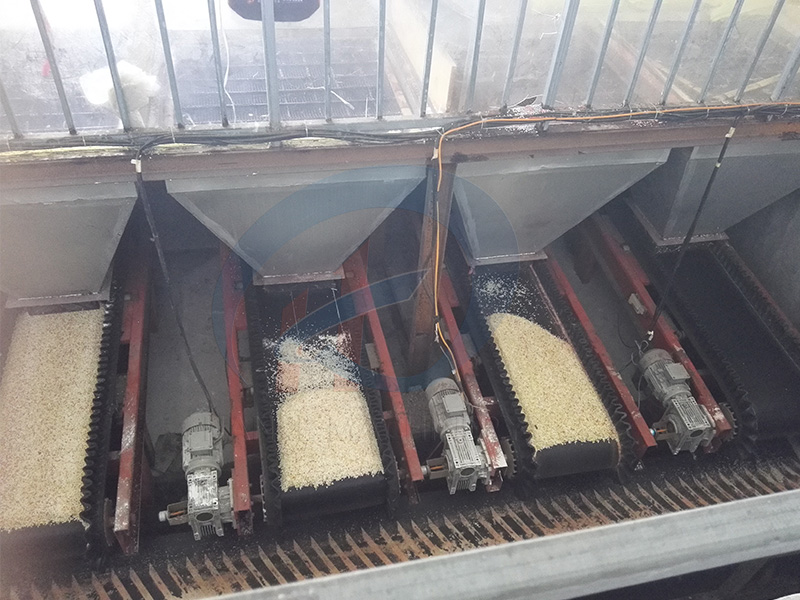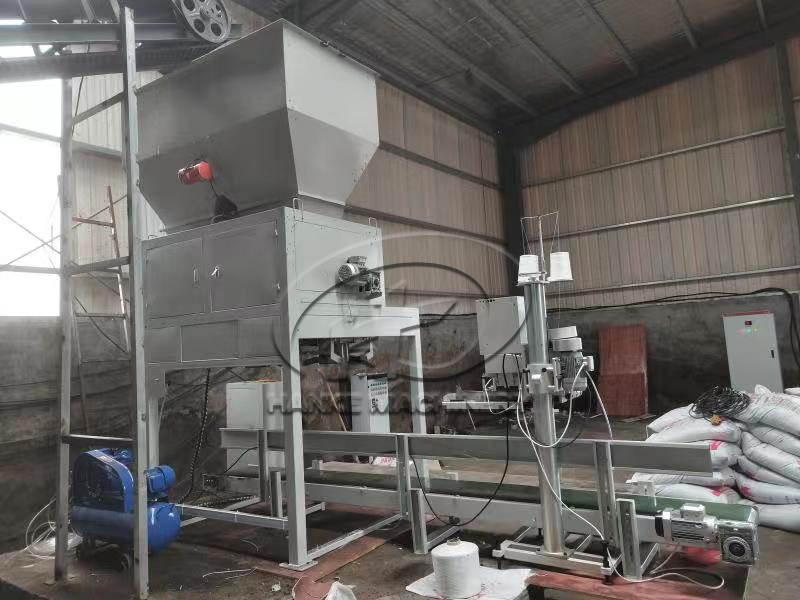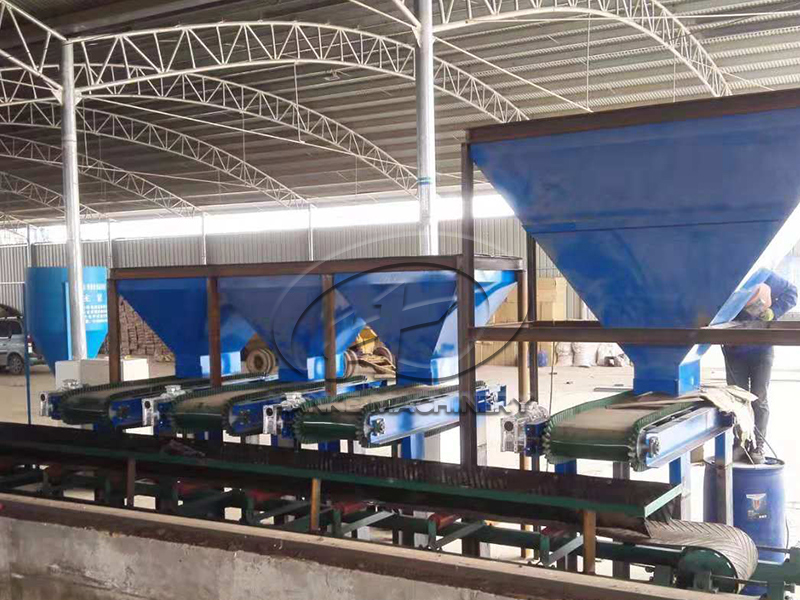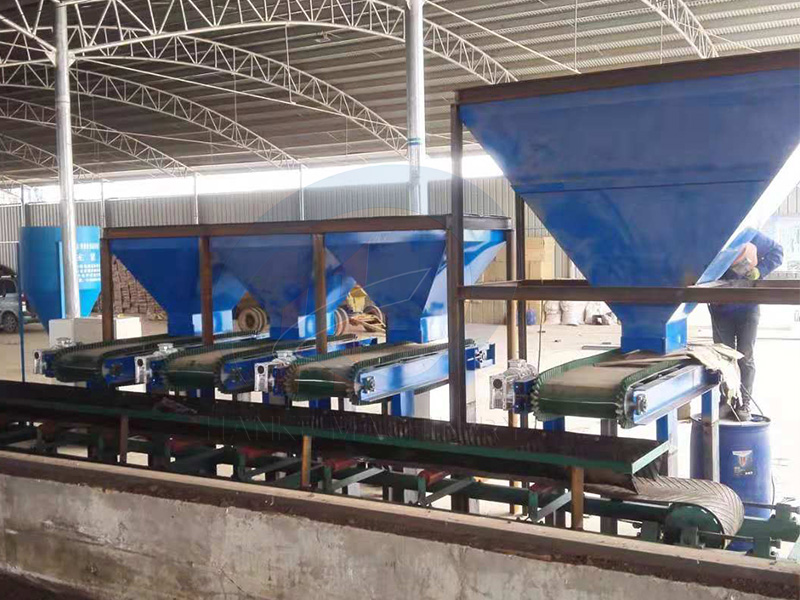 HOME > News > Industry News > Fertilizer single-bin dynamic batching machine: Features, Advantages and Key Points for Selection an
HOME > News > Industry News > Fertilizer single-bin dynamic batching machine: Features, Advantages and Key Points for Selection an Update time : 2025-08-13 Publisher:Zhengzhou Hanke Machinery
In the process of fertilizer production (especially compound fertilizers and organic fertilizers), the precision and efficiency of the batching stage directly affect product quality and production benefits. The single-bin dynamic batching machine, as a key equipment for continuous metering and batching of a single raw material, is widely used in production scenarios with fewer raw material types or a single main material, due to its unique structure and performance. The following is a detailed analysis from three aspects: features, advantages, and key points for selection and configuration.

I. Core Features of the Fertilizer Single-Bin Dynamic Batching Machine
The single-bin dynamic batching machine for fertilizers is a continuous metering and batching equipment specially designed for fertilizer raw materials (such as granules, powders, pastes, etc.). Its core features are centered around two major aspects: "single-bin structure" and "dynamic operation".
1. The structural design is compact and highly targeted
Single-silo independent layout: The equipment only contains one main material silo, focusing on the storage, transportation and measurement of a single raw material. It has a simple structure and occupies a small area, making it particularly suitable for production lines with limited production space or a single type of raw material.
Integrated integrated design: The silo, conveying device (such as screw conveyor, belt conveyor), metering sensor, drive system and control system are integrated into one, reducing the complexity of connection between equipment and lowering the installation difficulty.
2. Dynamic continuous operation, real-time response
Continuous batching mode: Different from the "intermittent weighing - unloading" process of static batch batching machines, dynamic batching machines can achieve continuous raw material transportation, real-time measurement and dynamic adjustment, which is suitable for the production requirements of assembly lines.
Real-time feedback and regulation: By using high-precision sensors (such as load cells and speed sensors) to collect material flow data in real time, the control system dynamically adjusts the conveying speed (such as screw speed and belt speed) according to the set value to ensure the stability of batching accuracy.
3. Specialized design adapted to the characteristics of fertilizers
Anti-clogging and anti-bridging structure: The bottom of the silo adopts a conical or arc-shaped design. Some equipment is equipped with vibrators, agitators or fluidizing devices to solve the problem of clogging caused by the easy caking and bridging of fertilizers (especially hygroscopic powders and pastes).
Corrosion-resistant and wear-resistant material contact: Components that come into direct contact with fertilizers (such as the inner walls of silos and conveying screws) are mostly made of stainless steel (304 or 316) or have wear-resistant coatings to resist corrosive components in fertilizers (such as nitrogen, phosphorus, and potassium compounds) and particle friction, thereby extending the service life of the equipment.
4. Automation and intelligent control
Integrated PLC control system, supporting remote monitoring and operation, can automatically generate production reports (such as material consumption, production time, etc.), and has PID regulation function to correct batching deviations in real time. Some models (such as HK-DPL-4) support multi-silo linkage and can be expanded to up to 8 silos, meeting the production demands of multiple varieties.
Ii. Core Advantages of the Fertilizer Single-bin Dynamic Batching Machine
Based on its structure and operational characteristics, the single-bin dynamic batching machine has demonstrated significant advantages in fertilizer production, especially suitable for medium and small-scale or single-main material production scenarios:
1. Enhance production efficiency and reduce downtime losses
Continuous and uninterrupted operation: Dynamic batching eliminates the "waiting for weighing" stage of batch-type equipment and can be seamlessly integrated with subsequent processes such as mixing and granulation, significantly enhancing the overall throughput of the production line and reducing capacity waste caused by equipment intervals.
Quick start-stop and switching: In response to the production demands of small batches and multiple batches, the equipment can quickly adjust the batching parameters (such as flow rate Settings), reducing the preparation time for batch changes.
2. Ensure the accuracy of ingredient preparation and stabilize product quality
Dynamic closed-loop control: By providing real-time feedback on the actual flow rate through sensors, the control system (such as PLC) immediately adjusts the drive device (such as variable frequency motor) to keep the actual flow rate stable at ±0.5% to 2% of the set value (accuracy varies depending on the equipment model), avoiding the failure to meet the fertilizer nutrient standards due to deviations in raw material ratios.
Reduce human intervention errors: Automated measurement and adjustment replace manual weighing, reducing batching deviations caused by factors such as operational experience and fatigue.
3. Reduce the overall cost and enhance the convenience of management
Simple structure and controllable cost: Compared with multi-bin batching machines, single-bin equipment has a lower initial procurement cost due to the reduction in the number of bins, conveying and control modules, making it suitable for small and medium-sized enterprises with limited budgets.
Low maintenance difficulty: With a small number of components, core vulnerable parts (such as spiral blades and sensors) are easy to replace, and the daily maintenance workload (such as cleaning and lubrication) is small, reducing operation and maintenance costs.
Data traceability: Devices equipped with intelligent control systems can record real-time flow, cumulative usage, fault information and other data, and support integration with production management systems, facilitating production process traceability and cost accounting.
Iii. Key Points for Selecting and Configuring a Single-Bin Dynamic Batching Machine for Fertilizers
When making a purchase, a comprehensive assessment should be made in combination with production requirements, fertilizer characteristics and equipment performance, with a focus on the following core elements:
1. Core performance parameters: Match production requirements
Measurement accuracy: Select the accuracy grade based on the requirements of the fertilizer product standards (for example, for compound fertilizers, it should be within ±1%), and give priority to choosing equipment that supports dynamic calibration functions (accuracy can be ensured regularly through standard weights or flow calibration).
Processing capacity range: Calculate the hourly demand for raw materials in a single warehouse based on the production line's capacity (for example, 5 tons of raw materials need to be mixed per hour), and select equipment with a processing capacity covering 1.2 to 1.5 times the actual demand to avoid "a small horse pulling a big cart" or "overkill".
Material adaptability: Select the appropriate conveying and metering methods based on the form of the fertilizer (granular, powder, paste)
Granular fertilizer: Prefer belt scales or screw scales (with larger blade spacing to prevent material jamming).
Powder fertilizer: Choose a screw scale with a sealed structure (equipped with a dust cover) to prevent dust from rising.
Paste/viscous fertilizer: Select a screw conveyor with heating or anti-sticking coating to prevent material adhesion.
2. Quality of key components: Ensure stability and lifespan
Measurement sensors: Select high-precision load cells (such as strain gauge type) or flow sensors. Prioritize well-known brands like Mettler-Toledo and HBM to ensure accurate and stable data collection.
Drive system: The motor is selected from well-known brands (such as Siemens, ABB or domestic Wannan Motor), and is matched with a frequency converter (such as Schneider, Delta) to ensure smooth speed regulation. The reducer selects a hard-toothed surface gearbox to enhance wear resistance and transmission efficiency.
Contact material: For parts such as silos and conveying components that come into contact with fertilizers, the material should be selected based on the corrosiveness of the fertilizer
Common fertilizers (such as urea, diammonium phosphate) : 304 stainless steel;
Highly corrosive fertilizers (such as those containing sulfur or chlorine components) : 316 stainless steel or lined with polytetrafluoroethylene coating.
3. Intelligence and ease of use: Enhance operational and management efficiency
Control system: Prioritize the selection of equipment equipped with PLC+ touch screen, which supports flow setting, real-time monitoring (flow, cumulative volume), parameter storage (multi-formula memory), and alarm functions (blockage, overload, and out-of-tolerance alarm).
Iv. Examples of Application Scenarios
Organic fertilizer production: Dynamically adjust the mixing ratio of livestock and poultry manure and inorganic fertilizers to ensure balanced nutrition.
Compound fertilizer production: Achieve precise proportioning of nitrogen, phosphorus and potassium to meet the needs of different crops.
Production of special fertilizers: such as slow-release fertilizers and water-soluble fertilizers, etc., by dynamically controlling the coating thickness or the addition amount of trace elements, the added value of the products can be enhanced.
Overall, the single-bin dynamic batching machine for fertilizers from Zhengzhou Hanke Machinery features "compact structure, continuous high efficiency, and stable precision" as its core advantages, making it suitable for the batching requirements of single-raw material or medium and small-scale fertilizer production lines. When making a purchase, a comprehensive assessment should be made around production capacity, fertilizer characteristics, quality of core components and intelligent functions. At the same time, professional manufacturers should be given priority to ensure equipment compatibility and after-sales service. A well-configured single-bin dynamic batching machine can significantly enhance production efficiency, stabilize product quality, and reduce the overall cost for fertilizer production enterprises.
If you need to obtain further technical parameters or quotation lists of specific models, Zhengzhou Hanke Machinery can provide you with the characteristics of your raw materials (such as fluidity and corrosiveness) and expected production capacity (tons per hour), so as to accurately recommend configurations.

see details +

see details +

see details +

see details +

 Tel:+86 17319777703
Tel:+86 17319777703
 E-mail:hkautomaticpack@foxmail.com
E-mail:hkautomaticpack@foxmail.com
 Address:Xingyang City, Zhengzhou City, Henan Province.
Address:Xingyang City, Zhengzhou City, Henan Province.
Privacy Policy Copyright © Zhengzhou Hanke Machinery Equipment Co., Ltd Co., Ltd.